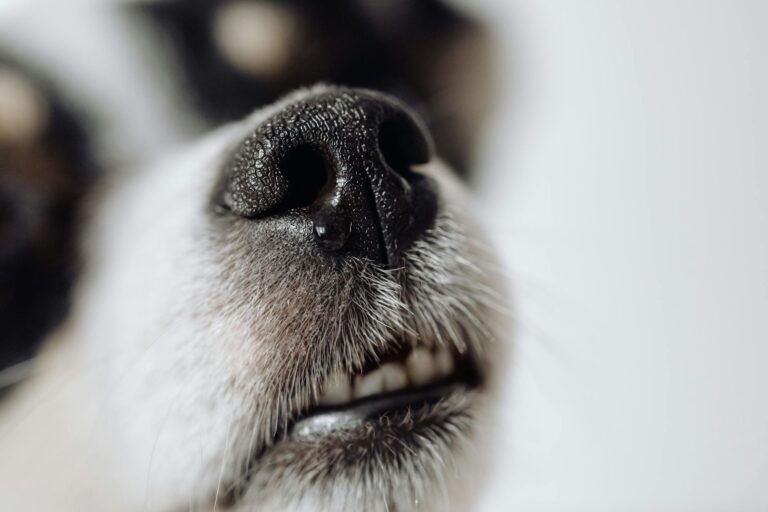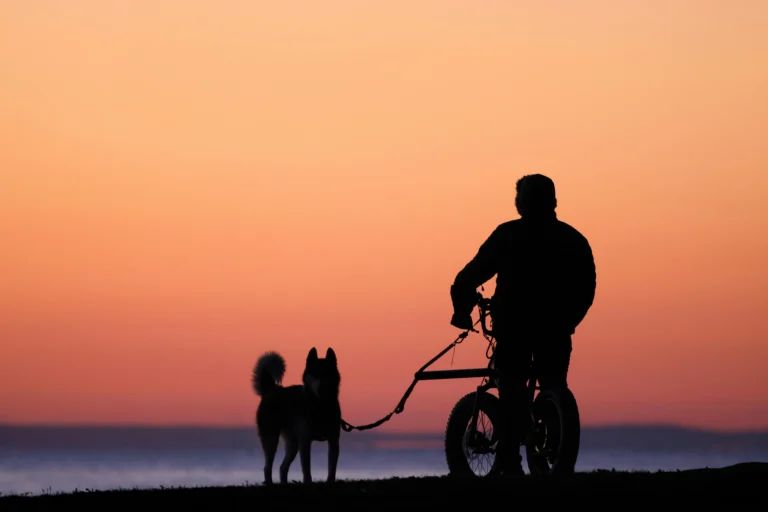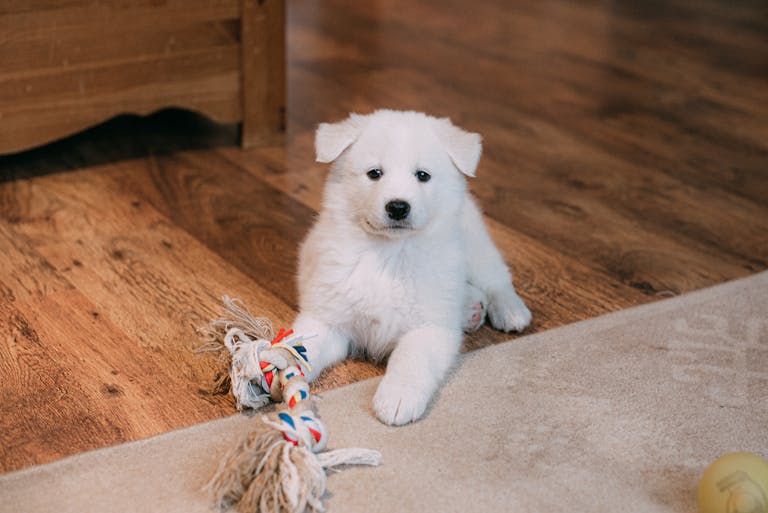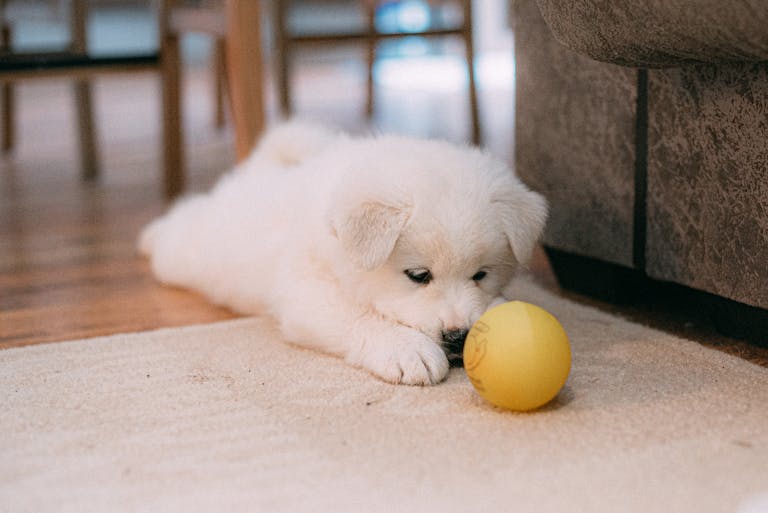How To Make Your Dog Tired
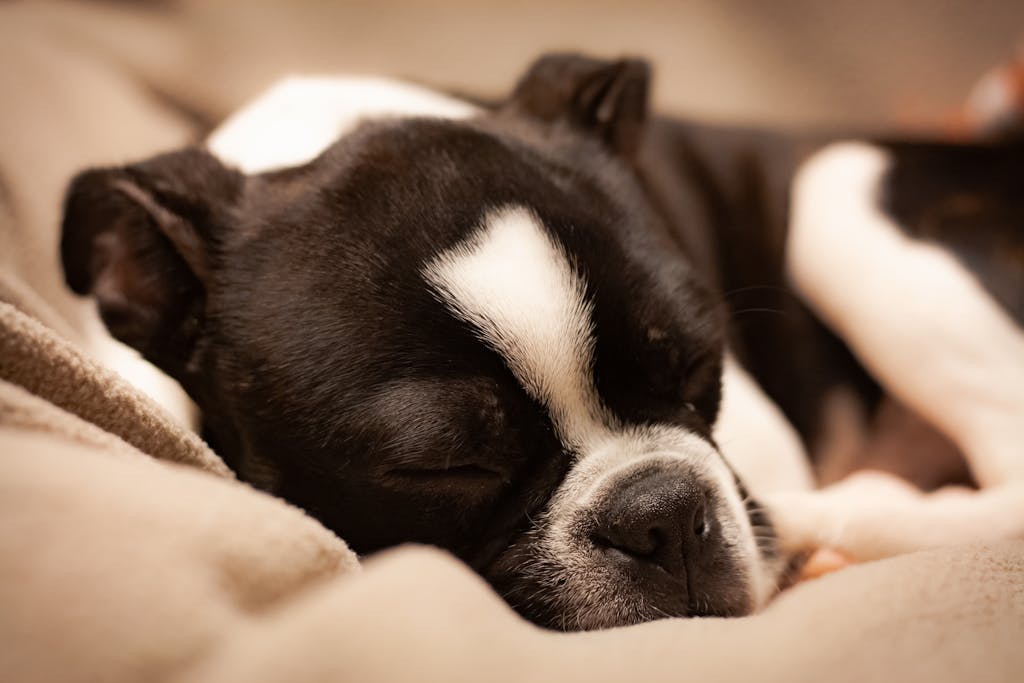
Want a calm, happy dog? This guide shows you how to make your dog tired — beyond just walks and play.
If your dog is sprinting laps through the house, barking at leaves, or chewing everything in sight, you’re not alone — and they’re not “just being bad.” Most dogs weren’t bred to lounge on couches all day. Their energy, drive, and instincts come from centuries of purposeful breeding.
Why Is Your Dog So Hyper?
There are many reasons why your dog has a bunch of energy, but most factors come down to two reasons: breed, and age.
Breed
Most dogs were bred to work, not lie around the house all day. And different breeds have different jobs (and instincts) hardwired into them.
For example:
- Herding breeds (like Border Collies or Aussies) were bred to think fast and move faster. They need a job to do.
- Terriers were born to dig, chase, and keep pest populations in check. That drive hasn’t gone anywhere.
- Working breeds (like Dobermans, Boxers, or Rottweilers) crave problem-solving and often excel in structured tasks and challenges.
When these natural instincts aren’t met with the right outlets, they can show up as barking, destruction, reactivity, or general chaos.
Age
Puppies and adolescent dogs are often bursting with energy because their bodies and brains are developing rapidly. They’re hardwired to move, explore, and play as part of learning how to navigate the world.
In their early months, puppies need short bursts of stimulation followed by plenty of rest. But as they enter adolescence (typically 6 months to 2 years, depending on the breed), their energy levels often spike even higher. During this stage, many dogs seem to never get tired — even after long walks or play sessions. It’s not that your training or enrichment is ineffective; it’s that their energy reserves are naturally high, and their impulse control is still developing.
The good news? Most dogs begin to mellow out as they reach social maturity — typically around 2 to 3 years old for many breeds. Seniors may still enjoy play and exercise, but they often tire faster and benefit more from gentle movement and brain games.
How Do You Tire A Dog Out?
So, now that you know why your dog is tired, how do you actually get them to calm down?
You need a structured, three-prong approached to tire your puppy out: physical exercise, mental exercise, and learned calmness.
Physical Exercise
Yes, dogs need physical outlets — but not all movement is created equal. The key is to mix intensity, structure, and variety.
Smart Ways to Exercise Your Dog
- Walks: Vary the route, pace, and environment to keep things interesting.
- For adult dogs that love to run, I recommend teaching them how to run alongside bikes or on treadmills for the extra challenge.
- Hikes: Uneven terrain and natural smells add layers of physical and mental challenge.
- Fetch: Add rules like “sit → fetch → drop it” to build impulse control.
- Flirt pole: Mimics the thrill of the chase in a safe, controlled way — ideal for prey-driven dogs.
- Swimming: Low-impact, high-resistance, and excellent for tiring out joints safely.
- Running on stairs or hills: Quick bursts of power without needing a huge backyard.
- Tug: Great for bonding — just keep it short and structured with clear start/stop cues.
- Urban agility: Jumping over benches, weaving through cones
- Pack walks: Walking with other dogs to fulfill social and physical needs
More exercise isn’t always better. For some dogs, it builds stamina without addressing emotional balance. Without mental stimulation or downtime, it may just create a stronger tornado. For other dogs, especially younger pups, too much exercise can cause joint issues for the rest of their life. That’s why more exercise isn’t always better.
Mental Stimulation
Mental exercise can exhaust your dog more effectively than physical exercise — and in far less time.
Why?
Problem-solving taps into your dog’s prefrontal cortex — the brain’s control center for focus, decision-making, and impulse control. This kind of thinking is tiring in a way physical exercise isn’t. Just 10–15 minutes of mental work can wear your dog out more effectively than a long walk.
Unlike physical play, mental stimulation encourages calm, not excitement. It helps dogs learn to focus, builds confidence, and channels instincts like sniffing or chewing into productive tasks.
The result? A more satisfied, balanced dog who’s not just tired — but regulated.
Enrichment Feeding: Ditch the Bowl
Turn mealtime into a daily brain workout by replacing the bowl with food puzzles and foraging games.
- Puzzle toys (e.g. Kongs, West Paw Toppls, Nina Ottosson puzzles)
- Snuffle mats
- Scatter feeding in the yard or on a towel
- DIY ideas: muffin tin + tennis balls, cardboard tubes with kibble
Problem-Solving Games
Simple, scent-based challenges can tap into your dog’s natural instincts and burn mental energy fast.
- Hide-and-seek (with treats or yourself!)
- “Find it” games with toys or food
- Food search boxes filled with crumpled paper or paper towel rolls
Quick Training Sessions
Short bursts of training aren’t just for obedience — they give your dog a focused job to do and boost mental stamina.
- Trick training: Teach spins, paws, chin rests, or targeting.
- Obedience drills: Reinforce sit, down, stay, and place with distance or duration.
- Nosework: Introduce scent-based searches with essential oils or hidden treats.
Note: rotation keeps things fresh. Dogs get bored with the same toys and puzzles. Keep enrichment exciting by rotating items every few days — stash some away and reintroduce them later. Even familiar toys feel “new” after a short break.
Teaching Calm
Some dogs just get stronger the more you try to tire them out. Like toddlers, they need to learn how to regulate — not just collapse from exhaustion.
Calmness Cues in High Energy Moments
Practice emotional regulation by adding calm before excitement:
- Ask for “wait” before releasing for a walk, tug, fetch, or food puzzles
- This builds impulse control and lowers reactivity over time
Strategic Use of Chews
Use chews as a “cool down” tool after play or training:
- Bully sticks
- Frozen Kongs
- Yak chews
Let your dog settle with a chew to shift into rest mode.
Build in Structured Downtime
Don’t let overstimulation lead to meltdowns:
- Crate naps for puppies
- Quiet time post-enrichment
- Calm recovery spaces to avoid crashes and tantrums
Note: dogs feed off our energy. If you’re excited, then your pup will also be excited. Same goes with anxiety, fear, and any other sort of bodily tension. If you want to make sure your pup is calm, make sure you embody that same calm vibe.
Sample Daily Routine for a Puppy
Young puppies thrive on short bursts of activity, followed by structured rest. This sample day balances movement, mental work, and downtime to prevent overstimulation and build good habits early.
| Time | Activity |
|---|---|
| Morning | Short walk + scatter feed breakfast |
| Mid-morning | 5–10 min training session + chew |
| Afternoon | Tug + puzzle toy (frozen) |
| Early evening | Scent games or flirt pole |
| Wind down | Settle practice on mat + Kong |
Sample Daily Routine For a High-Energy Adult
High-energy breeds need plenty of exercise, but also benefit from periods of calm. With focused enrichment and daily structure, even the highest energy working breeds can feel fulfilled.
| Time | Activity |
|---|---|
| Morning | Structured walk with training checkpoints (sits, waits, focus) + sniff time (60 mins) |
| Mid-morning | Puzzle feeder breakfast + 15-min trick training |
| Midday | Tug or flirt pole session + chew toy wind-down |
| Afternoon | Scatter feed kibble on a snuffle mat or towel |
| Early evening | Nosework game or “find it” with toys/treats around apartment |
| Wind down | Mat settle practice + frozen Kong or yak chew |
| Night | Calm cuddle time or crate sleep (if using crate) |
Final Thoughts
Tiring out your dog isn’t just about physical exhaustion — it’s about teaching them how to rest.
Energy management means knowing when to move and when to slow down. Rest is a skill, not an accident. Your dog doesn’t just need stimulation — they need balance, structure, and the tools to regulate themselves.

